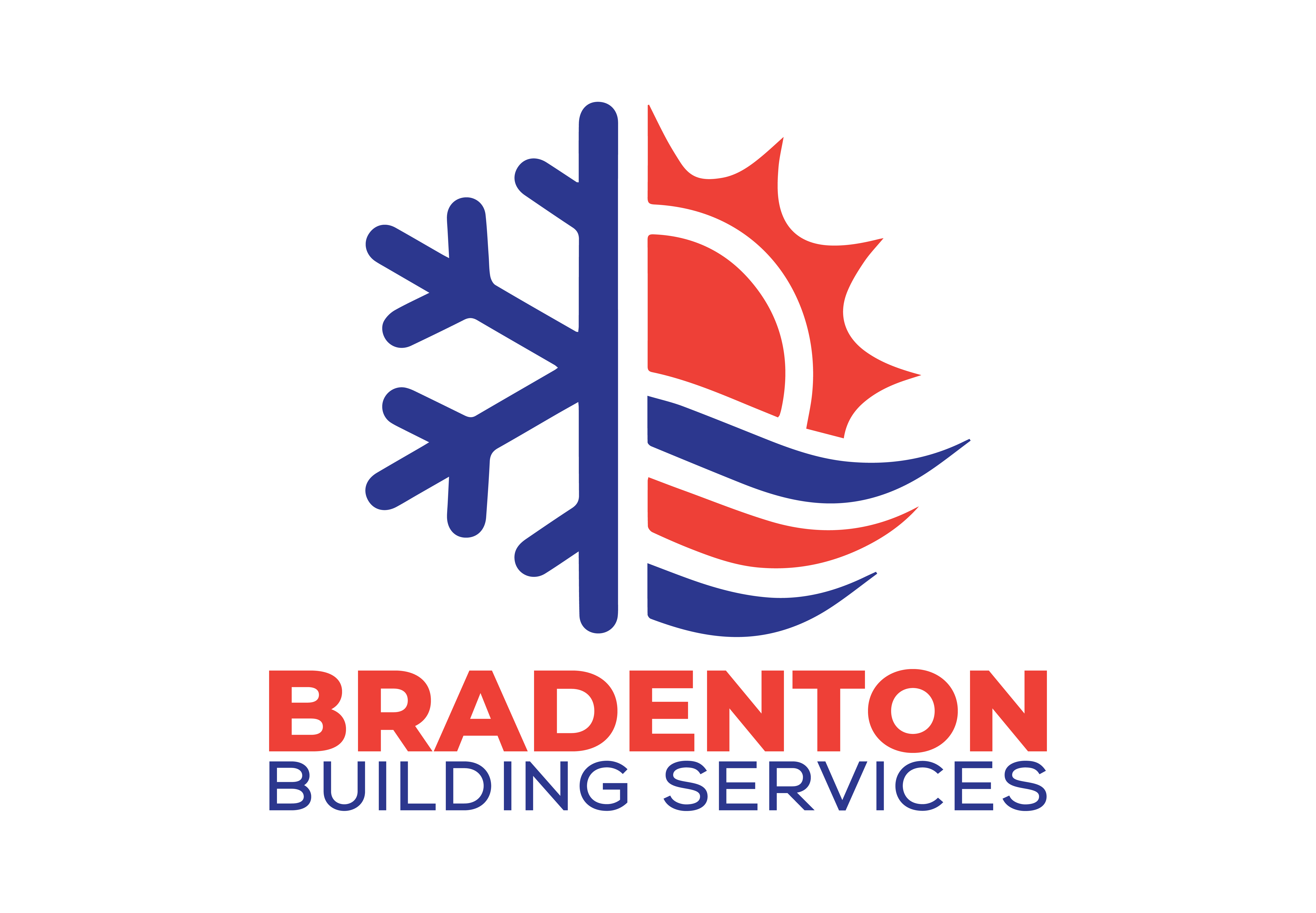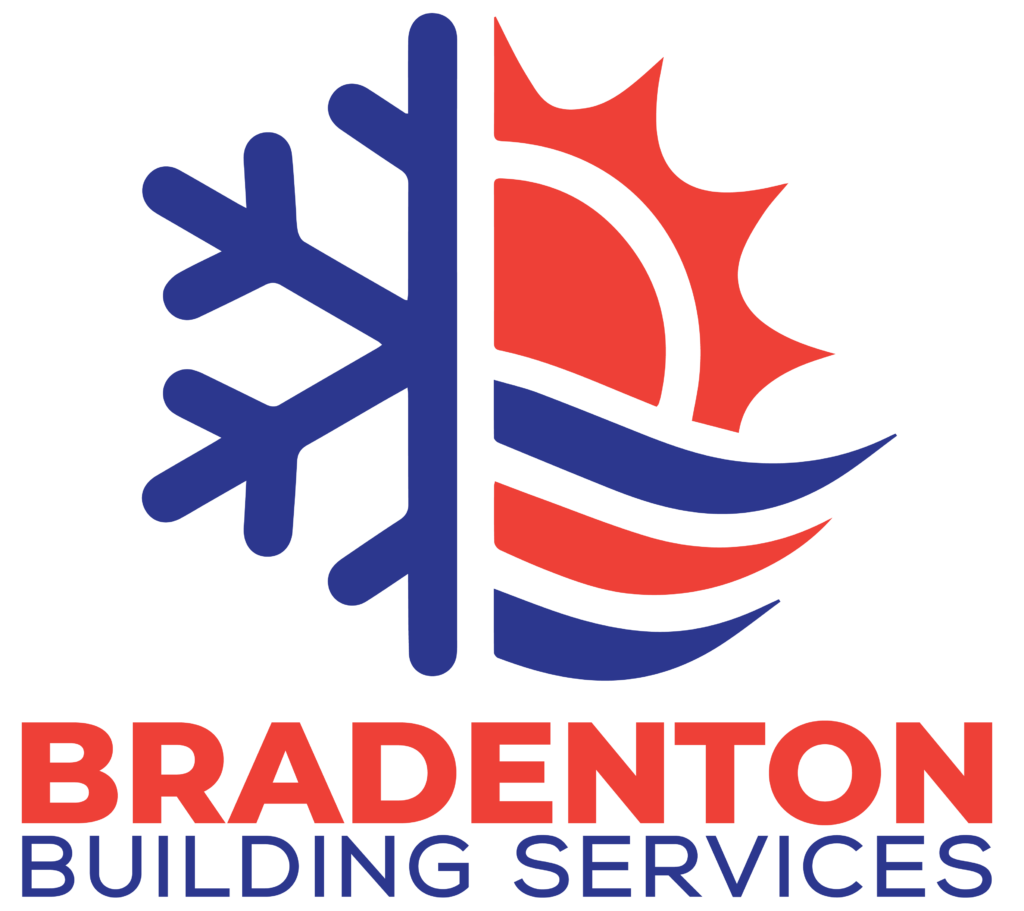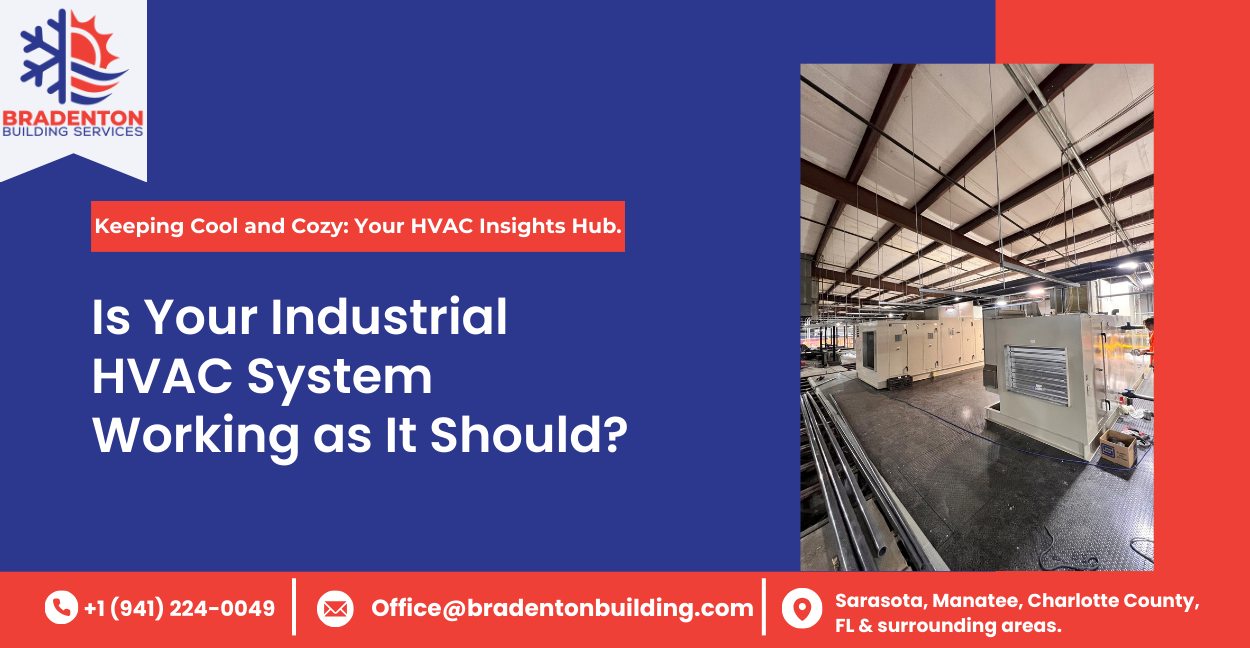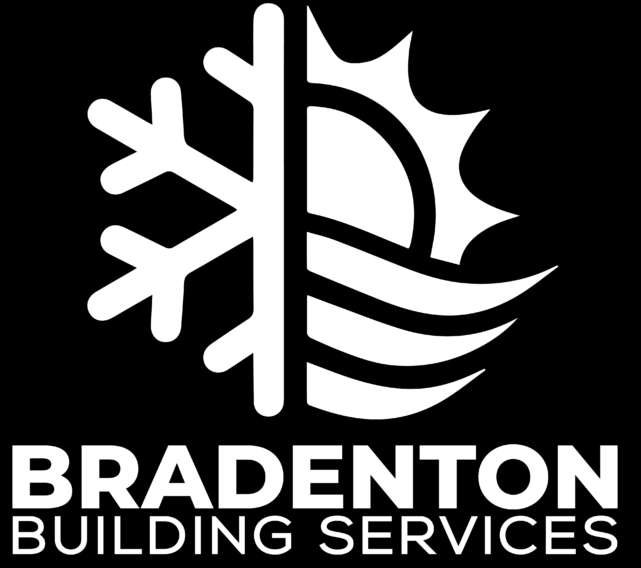An industrial HVAC system is the backbone of a comfortable and efficient work environment. Whether you manage a factory, warehouse, or office building, maintaining the proper function of your HVAC system is essential for productivity, safety, and energy savings. A well-functioning HVAC system ensures that employees work in a comfortable climate, reduces the risk of equipment malfunctions due to temperature fluctuations, and helps prevent costly energy bills. But how do you know if your industrial HVAC system is working as it should? In this article, we will examine the signs that your industrial HVAC system may need attention, outline the key components that ensure its proper function, and provide maintenance strategies to keep it running efficiently. By identifying issues early, you can avoid expensive repairs, extend the lifespan of your system, and create a safer, more productive environment for your business.
What Are Industrial HVAC Systems and How Do HVAC Systems Work?
An industrial HVAC system (Heating, Ventilation, and Air Conditioning) is a critical infrastructure that regulates temperature, air quality, and ventilation in large commercial and industrial buildings. These systems are typically installed on rooftops of structures like hospitals, office buildings, manufacturing plants, and retail centers. Unlike residential HVAC units, industrial systems are designed to meet the higher demands of expansive spaces, offering greater capacity and more complex components to ensure consistent comfort and air quality.
The working principle of industrial HVAC systems remains the same as residential units, focusing on heating, cooling, and ventilation. However, industrial systems are built on a much larger scale to handle the increased load and provide energy-efficient solutions for vast environments. These systems often feature advanced technology and multiple components, such as large-scale air handlers, ductwork, and specialized filtration systems, to maintain optimal performance in large spaces.
Due to the demanding conditions these systems face—such as exposure to lubricated motors, drain lines, and complex thermostats—issues can arise over time. Common problems like blockages, leaks, or carbon monoxide (CO) emissions can lead to costly repairs if not detected early. Routine inspections and maintenance by experienced professionals are vital to ensuring these systems run efficiently. Proactive maintenance helps prevent breakdowns, reduces energy consumption, and extends the life of the system, ensuring continuous comfort and reducing long-term operational costs.
Essential Equipment for Industrial HVAC Systems
Industrial HVAC systems require specialized equipment to ensure optimal performance, comfort, and energy efficiency in large facilities. These systems are designed to meet the unique demands of expansive commercial and industrial spaces. Below are the key components that play a vital role in maintaining a comfortable and safe working environment.
1.) Air Handling Units (AHUs)
AHUs condition and circulate air throughout the facility, ensuring proper ventilation and temperature control. They filter, heat, cool, and regulate airflow, helping maintain indoor air quality and comfort. AHUs are crucial for delivering fresh air, controlling humidity, and preventing contaminants from building up.
2.) Chillers
Chillers cool water or air within the HVAC system, regulating temperature in industrial environments. By absorbing heat and expelling it outside, chillers prevent overheating and ensure consistent temperature control, particularly in heat-sensitive areas like manufacturing or data centers.
3.) Cooling Towers
Cooling towers expel excess heat from the HVAC system, preventing overheating and maintaining efficiency. They dissipate heat through evaporation, helping to cool circulating water and ensuring the system operates at optimal performance.
4.) Heating Boilers
Heating boilers generate steam or hot water for heating industrial spaces, especially in colder climates. They provide consistent heat, ensuring comfort and safety while efficiently regulating temperature across large areas.
5.) Ventilation Fans
Ventilation fans ensure proper airflow and air quality by replacing stale air with fresh air. They are essential for preventing the buildup of pollutants, controlling humidity, and improving overall air circulation, especially in spaces with high moisture or fumes.
How Industrial HVAC Systems Differ from Residential Systems
Industrial HVAC systems are significantly larger, more complex, and designed to meet the demanding needs of commercial and industrial environments. While both industrial and residential systems share the same basic function—heating, cooling, and ventilating air—the scale, components, and operational requirements differ greatly. Here’s a breakdown of the key differences:
1.) Size and Capacity
Industrial HVAC systems are built to handle much larger spaces, often covering thousands of square feet. They are designed to manage higher volumes of air, with the ability to regulate temperatures and airflow in vast, open areas such as factories, warehouses, and office buildings. In contrast, residential systems are designed for smaller, more confined spaces, typically managing the needs of a single family or household.
2.) Complexity and Components
Industrial HVAC systems consist of more advanced and diverse components, including air handling units (AHUs), chillers, boilers, and cooling towers, all of which work together to maintain optimal conditions. These systems may also include features such as humidity control, specialized exhaust systems, and high-efficiency filtration systems to meet the specific needs of the environment. Residential systems are much simpler, typically consisting of a furnace, air conditioner, and basic ductwork.
3.) Redundancy and Reliability
Industrial HVAC systems often include redundancy features to ensure continuous operation, even in the event of a failure. For example, backup compressors, additional air handlers, or backup power sources are common in industrial settings to minimize downtime and maintain critical operations. Residential HVAC systems, on the other hand, typically do not have such backup mechanisms and may experience longer downtime in case of failure.
4.) Temperature and Humidity Control
In industrial settings, precise temperature and humidity control is often essential, especially in environments like laboratories, clean rooms, or manufacturing plants. These systems are designed to handle significant fluctuations in temperature and humidity and may include specialized equipment for exhaust removal, moisture control, or air filtration. Residential systems generally focus on providing comfort, with less emphasis on specialized air quality or environmental controls.
5.) Energy Efficiency and Cost
Due to the larger scale and complexity of industrial HVAC systems, they are generally more energy-intensive and costly to install and maintain. However, they are designed to be highly efficient in order to minimize energy consumption and operating costs over time. Residential systems, while more affordable, are designed for energy efficiency as well but are not typically optimized for the high demands of industrial environments.
Don’t let HVAC issues disrupt your operations. Trust Bradenton Building Services for comprehensive HVAC maintenance. Contact us today to ensure your system stays efficient and reliable.
Major Types of HVAC Systems for Industrial Applications
In industrial settings, choosing the right HVAC system is crucial for maintaining optimal temperature, air quality, and energy efficiency. Below are the major types of HVAC systems commonly used in industrial applications:
1.) Split Systems
Split systems are often used in medium-sized industrial applications. They consist of two separate units: an indoor air handler and an outdoor unit containing the compressor and condenser. These systems are space-efficient, offer good temperature control, and are relatively easy to maintain.
2.) Packaged Systems
Packaged systems integrate all HVAC components into a single unit, typically installed on the roof or outside the building. These systems are ideal for large industrial or commercial spaces, offering simplicity, ease of installation, and low maintenance.
3.) Central HVAC Systems
Central HVAC systems are designed for large industrial or commercial buildings. They use a central air handler or furnace to distribute conditioned air through ducts, ensuring consistent temperature and humidity control across expansive areas.
4.) Variable Refrigerant Flow (VRF) Systems
VRF systems are energy-efficient and provide precise temperature control by using refrigerant as the medium for both heating and cooling. They are ideal for large buildings with varying temperature needs, offering flexibility and substantial energy savings.
Comprehensive Maintenance for Industrial HVAC Systems
Proper maintenance of industrial HVAC systems is crucial to ensuring their long-term efficiency, reliability, and cost-effectiveness. Regular servicing helps prevent breakdowns, improves energy efficiency, and extends the lifespan of the system. Below are the essential components of a comprehensive maintenance strategy for industrial HVAC systems:
1.) Routine Inspections
Regular inspections are essential to detect potential problems early. During inspections, technicians assess the overall health of the system, looking for signs of wear, leaks, unusual noises, or temperature fluctuations that could indicate underlying issues.
2.) Air Filter Replacement
Air filters trap dust, dirt, and other particles, ensuring clean airflow and preventing contaminants from entering the system. Clogged filters reduce efficiency, leading to increased energy consumption and poor air quality. How long do air filters last? Regular replacement is vital for optimal performance.
3.) Cleaning Coils and Components
Dust and debris can accumulate on the evaporator and condenser coils, obstructing heat transfer and reducing system efficiency. Cleaning the coils and other components regularly helps maintain the system’s performance and prevents overheating.
4.) Lubrication of Moving Parts
HVAC systems contain several moving parts such as motors, fans, and pumps. Lubricating these components reduces friction, minimizes wear, and ensures smooth operation, preventing costly breakdowns and extending the life of the system.
5.) Refrigerant Level Checks
Low refrigerant levels can affect your HVAC system’s efficiency. Regular checks help maintain optimal levels, ensuring energy efficiency and preventing damage. Older R22 systems have been phased out, replaced by R410A, and now R410A is being replaced by R32 and R454B. When replacing your system, consider these changes for better performance and environmental compliance.
6.) Thermostat Testing and Calibration
Accurate temperature control is essential for maintaining comfort and energy efficiency. Testing and calibrating thermostats ensures they function correctly, preventing temperature fluctuations that can lead to discomfort and higher energy bills.
7.) Ductwork Cleaning
Over time, dust and debris can accumulate in ducts, obstructing airflow and reducing system efficiency. Regular cleaning of the ductwork improves air quality, ensures proper airflow, and enhances overall HVAC system performance.
8.) Insulation Inspection and Maintenance
Insulation is crucial for maintaining consistent temperature control and preventing energy loss in HVAC systems. Over time, it can degrade, leading to inefficiency and higher energy costs. Regular inspection and repair of insulation help optimize energy performance, reduce operational costs, and ensure that your HVAC system runs at its best.
Keep your industrial HVAC system running smoothly with routine maintenance. Trust Bradenton Building Services to ensure your system is functioning at its best. Contact us today for expert HVAC solutions tailored to your business needs.
Frequently Asked Questions (FAQs)
1.) What factors affect the lifespan of an industrial HVAC system?
The lifespan of an industrial HVAC system can vary based on several factors, including the quality of the system, maintenance practices, operating conditions, and the type of environment. On average, these systems last 15-25 years, but regular inspections and timely repairs can extend their lifespan.
2.) How often should I schedule maintenance for my industrial HVAC system?
Regular maintenance is crucial for optimal performance. It is recommended to schedule service at least twice a year—preferably before the heating and cooling seasons. However, systems with high usage or operating in extreme conditions may require more frequent inspections.
3.) What are the most common signs that my industrial HVAC system needs repairs?
Look out for signs such as unusual noises, inconsistent temperatures, increased energy costs, poor airflow, or the system frequently cycling on and off. These issues may indicate a malfunction, and early detection can prevent costly repairs.
4.) How can I improve the energy efficiency of my industrial HVAC system?
To improve energy efficiency, ensure that your system undergoes regular maintenance, such as cleaning filters, lubricating moving parts, and checking for leaks. Upgrading to energy-efficient equipment, optimizing thermostat settings, and utilizing programmable controls can also help reduce energy consumption.
5.) What is the difference between industrial and residential HVAC systems?
Industrial HVAC systems are designed to handle the larger scale and more complex needs of commercial and industrial buildings. They manage higher air volumes, more significant temperature fluctuations, and specialized functions such as exhaust ventilation or humidity control, whereas residential systems are simpler and designed for smaller spaces.




